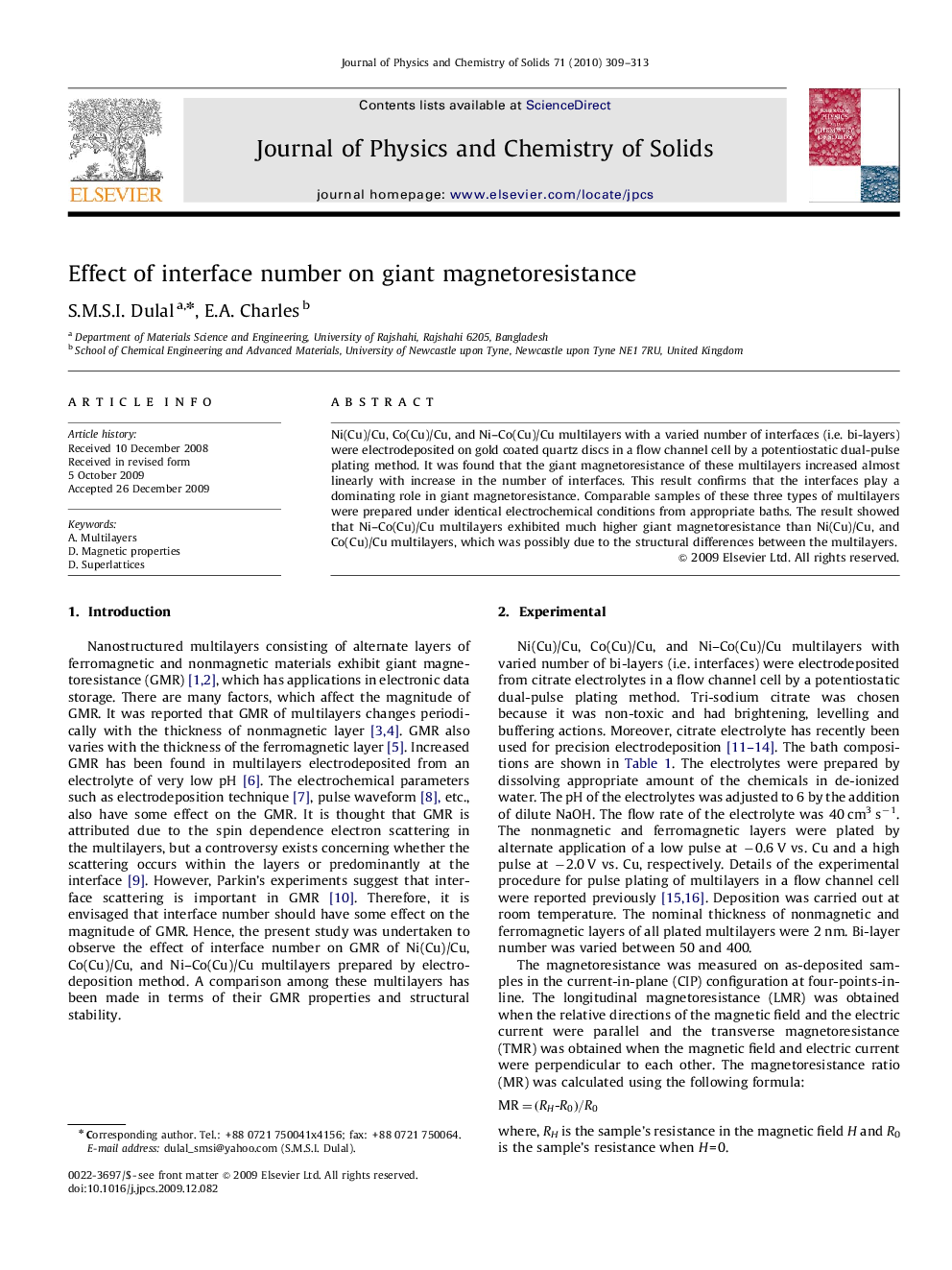| Article ID | Journal | Published Year | Pages | File Type |
|---|---|---|---|---|
| 1517471 | Journal of Physics and Chemistry of Solids | 2010 | 5 Pages |
Ni(Cu)/Cu, Co(Cu)/Cu, and Ni–Co(Cu)/Cu multilayers with a varied number of interfaces (i.e. bi-layers) were electrodeposited on gold coated quartz discs in a flow channel cell by a potentiostatic dual-pulse plating method. It was found that the giant magnetoresistance of these multilayers increased almost linearly with increase in the number of interfaces. This result confirms that the interfaces play a dominating role in giant magnetoresistance. Comparable samples of these three types of multilayers were prepared under identical electrochemical conditions from appropriate baths. The result showed that Ni–Co(Cu)/Cu multilayers exhibited much higher giant magnetoresistance than Ni(Cu)/Cu, and Co(Cu)/Cu multilayers, which was possibly due to the structural differences between the multilayers.
